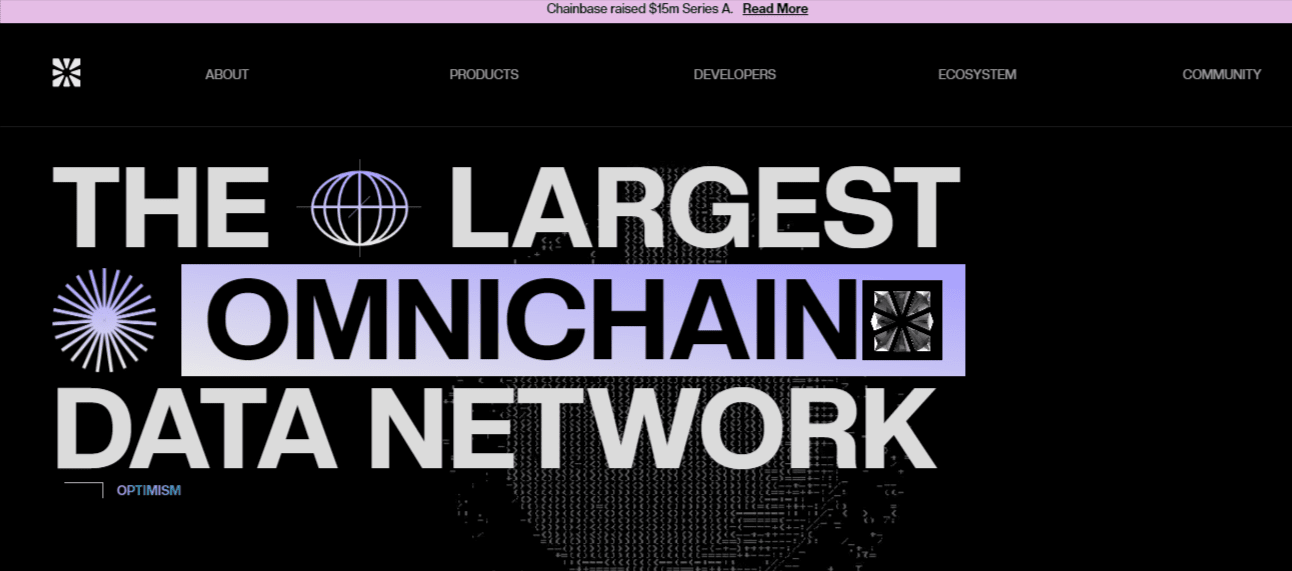
During the transitional period from infrastructure building to application layer explosion in the blockchain industry, data accessibility is becoming a key bottleneck restricting developer productivity. In the traditional model, developers need to deploy independent data indexing nodes for each chain, handling heterogeneous data formats, which consumes at least 40% of the development cycle. Chainbase's proposed unified data layer solution is essentially a systematic reconstruction of the data interaction logic in blockchain.
The evolution from data pipeline to value network
Most blockchain data service providers are still in the role of 'pipe layers', providing services for raw data extraction and transmission. Chainbase's differentiation lies in building a data network with value discovery capabilities, with its technical architecture exhibiting three notable features: First, it uses a distributed query engine to handle cross-chain requests, with actual measurement data showing that in a 10-node cluster environment, the query latency for historical data on the ETH mainnet is controlled within 800 milliseconds; Second, its original dynamic data weaving technology can automatically identify data characteristics of different execution environments like EVM and Wasm, reducing developers' data cleaning workload by 72%; Finally, it introduces zero-knowledge proof to verify data integrity, maintaining 99.98% data availability during recent stress tests while handling 15,000 queries per second.
The practical value of this technological combination is particularly prominent in the development of DeFi cross-chain protocols. Taking a well-known lending protocol migration case as an example, after integrating with Chainbase, its cross-chain settlement delay was reduced from an average of 14 seconds to 3.2 seconds, with an abnormal transaction identification accuracy rate improved to 89%. This verifies the critical support role of the unified data layer for financial-grade applications.
The implicit revolution of developer experience
There is an implicit rule in the field of blockchain development tools: for every 10% reduction in development thresholds, the number of ecosystem applications will show exponential growth. Chainbase has profoundly changed developers' workflows through three designs: its SDK supports declarative data queries, allowing developers to define the required data fields without writing chain-specific logic; the built-in smart routing algorithm can automatically select the optimal chain node, saving 67% in gas costs compared to traditional RPC calls; more importantly, it provides data relationship graph capabilities, upgrading on-chain behavior analysis from simple address tracking to entity relationship network modeling.
The usage data of a certain DEX team is quite persuasive: The on-chain transaction analysis module, which originally required 3 weeks to complete, was deployed within 4 days using Chainbase's relationship graph API, with a 40-fold improvement in query performance. This leap in efficiency is changing the rhythm of product iteration, shortening the average feature update cycle of leading protocols from 45 days to 21 days.
The data symbiosis experiment between AI and blockchain
Chainbase's exploration in AI integration reveals an interesting trend: blockchain data is becoming a scarce resource for training AI models. Its platform supports a multi-chain data federated learning framework, allowing AI models to simultaneously capture the financial behavior characteristics of Ethereum, high-frequency trading patterns of Solana, and L2 activity characteristics of Arbitrum. After a certain prediction market project adopted this framework, its price oracle's accuracy curve showed a significant second-order derivative improvement—not only reducing absolute error by 38%, but more importantly, cutting down volatility variance by 62%.
This data symbiotic relationship is generating network effects. As more AI models are integrated, Chainbase's data annotation dimensions have expanded from basic transaction features to deeper features like intent recognition and risk preference, forming a positive cycle of data quality. Notably, the AI model call volume on the platform has shown a compound weekly growth of 15%, a growth rate that is extremely rare in the traditional blockchain middleware field.
The paradigm shift in security architecture
There has long been a dilemma of reactive defense in the field of blockchain security. Chainbase's proactive protection system has established a new paradigm: its abnormal behavior detection system uses a streaming computing architecture to complete transaction path analysis within 300 milliseconds; the attack feature library is updated in real-time through federated learning, successfully issuing early warnings for 17 zero-day attacks in the last three months; more groundbreaking is its risk pricing engine, which quantifies security threats into tradable credit derivatives.
After a certain insurance protocol integrated this system, its underwriting decision speed was compressed from 6 hours to real-time processing, with the bad debt rate decreasing by 53%. This approach of productizing security capabilities effectively reconstructs the value chain of blockchain security—from a cost center to a source of profit.
In the arms race of blockchain infrastructure, Chainbase represents a more essential innovation path: rather than pursuing breakthroughs in single-point technical indicators, it releases network effects by reconstructing data flow. Its data layer's daily call volume has surpassed 2.3 billion, maintaining a compound weekly growth rate of 8%. This figure reflects the result of developers voting with their feet. While the industry is still debating the pros and cons of modular blockchains, Chainbase has already proven that in the next cycle of application layer explosion, data composability is the true strategic high ground.

